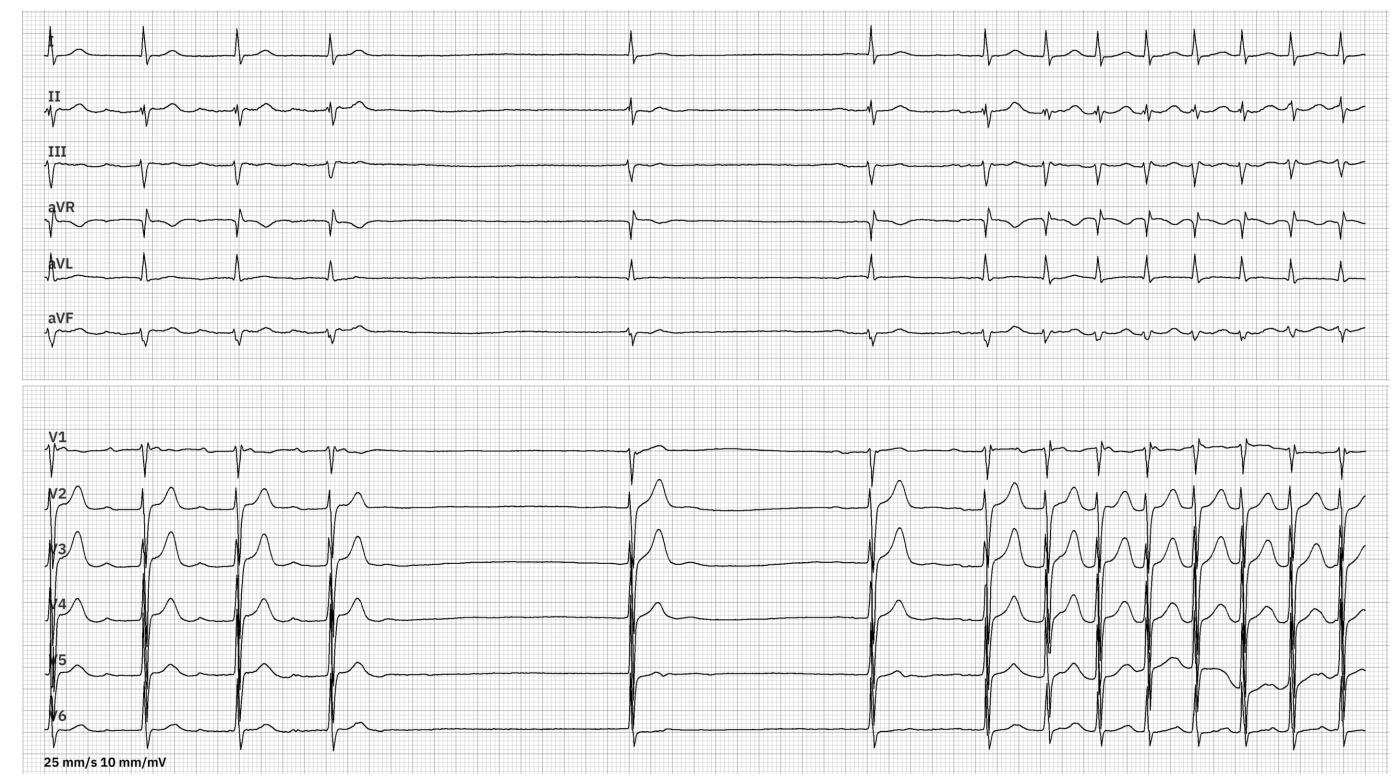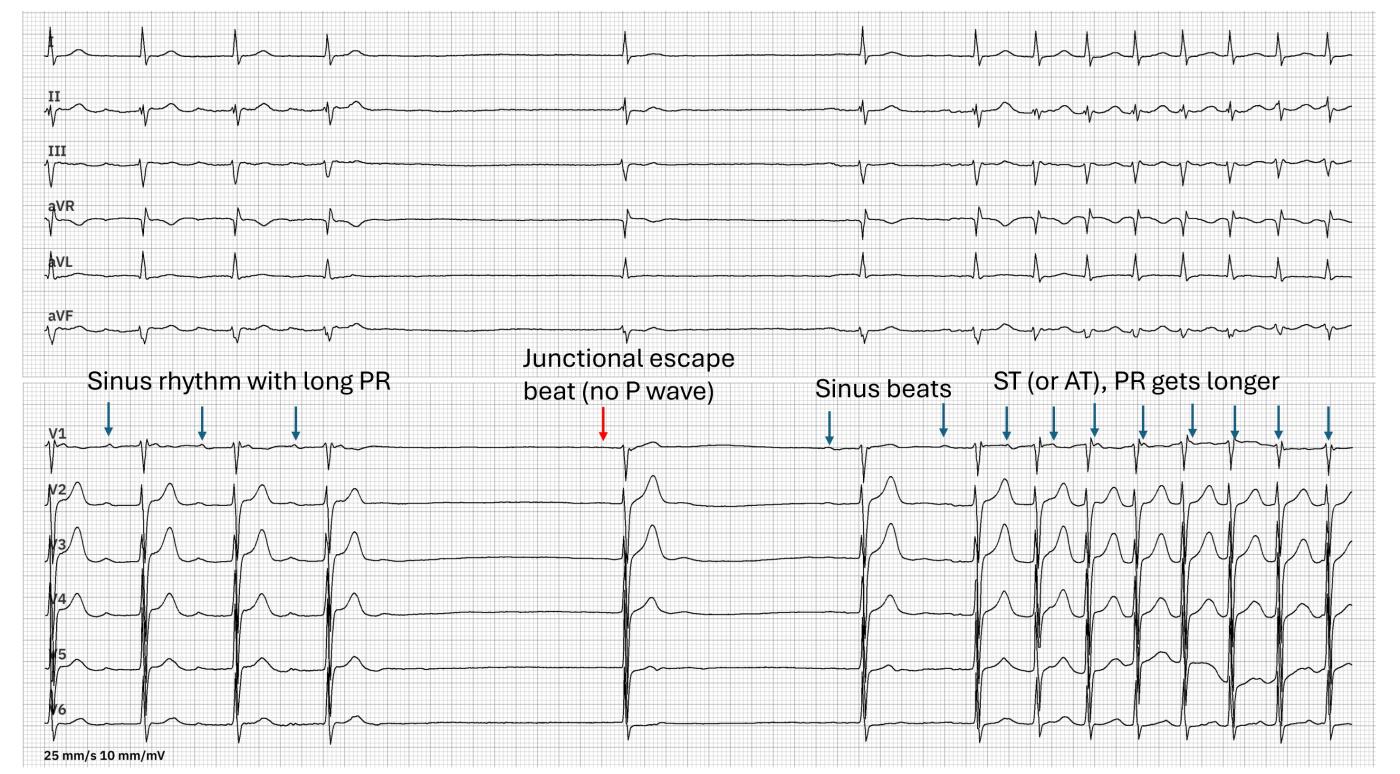The ECG shows an example of a patient with bradycardia/tachycardia syndrome (also called sick sinus syndrome). Initially, a sinus rhythm with a heart rate of approx. 70 bpm is seen. This is followed by sinus arrest of just under 3000 ms, followed by a junctional escape beat (no preceding P wave, QRS remains narrow). After a further pause of just under 2000 ms, 2 sinus node beats follow, which merge into a sinus tachycardia or atrial tachycardia (heart rate approx. 120 bpm here). Patients with bradycardia/tachycardia syndrome usually require a heart pacemaker to prevent the heart rate from becoming too slow. Medication can then be used to treat the tachycardic phases (if necessary),
-

- Dr A Röschl's blog
- Log in or register to post comments
All our content is FREE & COPYRIGHT FREE for non-commercial use
Please be courteous and leave any watermark or author attribution on content you reproduce.



